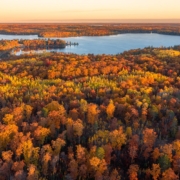Indigenous Land and Carbon Rights are Vital to Mitigating Climate Change
The protection of Indigenous land rights helps to secure the carbon stored by forests and soil on Indigenous traditional territories and treaty lands. Carbon capturing and storage or ‘carbon sequestration’ in the air, lands, and trees, reduce greenhouse gas emissions (GHG) world-wide and are crucial to mitigating climate change.
Tree cover loss continues to be a threat to climate change. “Indigenous peoples and local communities manage[d] at least 17 percent, or 293,061 million metric tons (Mt) of the total carbon stored”, in about 69% of the world’s forest cover, in 2017. If carbon held underground in forests and lands is released into the atmosphere, it would add to global CO2 emissions, the majority of which comes from road transport.
Forest protection and securing Indigenous land title are linked. Titling Indigenous community lands “significantly reduces both clearing and disturbance” in the short term. For example, in the Peruvian Amazon, deforestation was reduced by 81% in the year that followed titling. Drawing from the interactive maps available online by LandMark Global Platform of Indigenous and Community Lands, current users can see total tree cover loss from 2001-2019 on Indigenous and community lands.
Indigenous rights to land and recognition by governments of these rights may not only secure Indigenous rights to carbon but may also facilitate Indigenous access to carbon markets and reforms to regulatory processes. These interventions could more powerfully manage CO2 emissions and mitigate the global effects of climate change.
By Leela Viswanathan
(Image credit: Chuttersnap, Unsplash)






